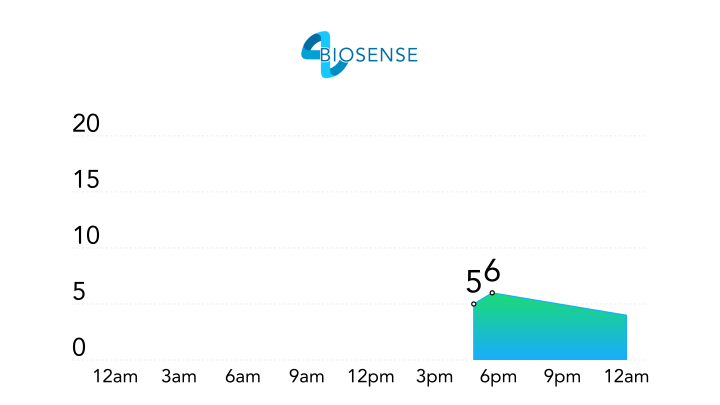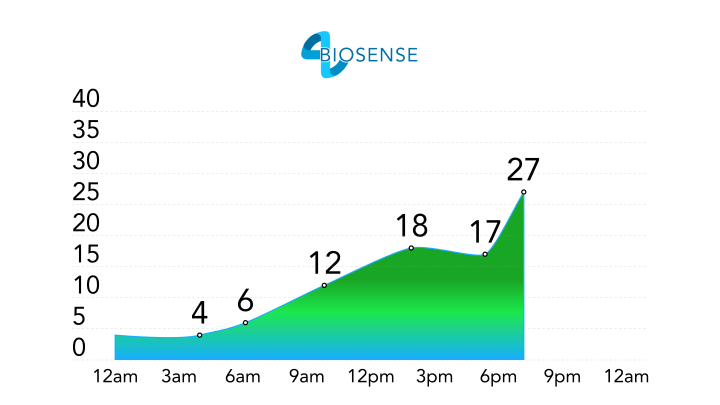In the last few years, fasting has become one of the most popular strategies for losing weight. This comes as no surprise given the staggering anecdotes of 30, 50, and over 100-pound weight loss successes from people who have tried fasting.
What is fasting?
Fasting is the practice of refraining from food and beverage consumption for a set period of time ranging from just 16 hours (intermittent fasting) up to days at a time (extended fasting).
The increased interest in fasting is a result of its ability to produce potent weight loss results. In fact, research has found that fasting can lead to greater fat loss than calorie restriction alone (1). Even better is that it can also promote the preservation of precious muscle (2).
However, a recent review paper of fasting published in the New England Journal of Medicine highlights that the benefits of fasting go far beyond weight loss (3).
According to the review, “During fasting, cells activate pathways that enhance intrinsic defenses against oxidative and metabolic stress and those that remove or repair damaged molecules.”
The paper further explains that, “Cells respond to intermittent fasting by engaging in a coordinated adaptive stress response that leads to increased expression of antioxidant defenses, DNA repair, protein quality control, mitochondrial biogenesis and autophagy, and down-regulation of inflammation.”
If that was too science-heavy, let me explain. Over half of our population is suffering from preventable chronic diseases such as cardiovascular disease, diabetes, and Alzheimer’s, to name a few.
All of these conditions are characterized by inflammation, damaged metabolism, and altered genetics. The cellular responses to fasting target these factors, which means that fasting has the ability to prevent or, at the very least, improve symptoms of the most common chronic diseases.
The question is, how does fasting produce such a therapeutic response? While there are several factors involved, some of which are still being understood, it appears that the presence of ketone bodies plays a major role.
Ketone bodies, or ketones, are energy molecules created by the liver from the breakdown of stored body fat. When we fast, or follow a low carb diet, our blood sugar and insulin levels lower. This signals a response from our body to release stored fat so it can be used in place of sugar for energy. While much of this released fat is burned for energy, some of it travels to the liver where it is converted to ketones. Ketones are then released into our bloodstream where they can be taken in and used for energy by nearly every cell, especially brain cells.
This process, known as ketogenesis, has been a part of our human physiology for as far back as we know. In fact, it is believed that this process is what allowed the human brain to evolve. Ketones provide the brain with fuel during times of limited food availability. From an evolutionary standpoint, you can see how this would be beneficial.
However, ketones are not just an energy source. They also act as cellular signaling molecules that have a profound impact on health and aging, which is why they are found at the center of the benefits of fasting.
To provide an example of how the human body responds to fasting with ketone production, check out this self-experiment I did!
24-Hour Fasting Self-Experiment
Before we dive into this experiment, I’ll start by saying that I am not a newbie when it comes to fasting. I have been following a keto diet for almost 5 years and have been incorporating fasting just as long. This means that I am to a point where fasting is pretty easy for me. If you are new to all of this, as I will demonstrate, you do not have to start with a 24 hour fast to see the benefits.
During this self-experiment I completed a 24 hour fast consisting of only water and black coffee. I’ll give up food for 24 hours, but coffee? No way! Who’s with me?
Throughout the 24 hour fast, I frequently checked my breath ketones using the Biosense breath ketone meter. Check out the results below:

Note: The readings are measured in a breath acetone unit known as ACE. For those accustomed to measuring ketones in the blood, an ACE reading is 10x the blood ketone equivalent. Ex: 10 ACE is equivalent to 1.0 mmol.

As you can see from the graphs above, I had a pretty significant increase in my ketone levels over the course of the 24 hours. As I previously mentioned, I have been following a ketogenic diet for almost 5 years now which explains why I was already in a state of ketosis at the beginning of the experiment.
You may have noticed that the increase in ketones was not quite linear. Specifically, there was a dip in ketones prior to sleep and in the early morning. This is to be expected for two reasons:
- There is less demand for ketone production during sleep
- Cortisol spikes in the morning as a part of our natural circadian rhythm which can have a subsequent ketone lowering effect.
After the predicted morning dip in ketone levels, there was a continued rise in ketones until I had my first meal at the 27 hour mark. For those who are wondering, my first meal after the fast was a juicy ribeye, a couple eggs, and Brussels sprouts. A meal that made the fast totally worth it!
Conclusion
Fasting results in increased ketone production to provide the body with energy and signal for responses that can improve overall health and promote longevity.
What makes fasting so great is that the benefits experienced during the fasting period do not disappear once you start eating again. According to the article in NEJM, “Periodic flipping of the metabolic switch not only provides the ketones that are necessary to fuel cells during the fasting period but also elicits highly orchestrated systemic and cellular responses that carry over into the fed state to bolster mental and physical performance, as well as disease resistance.”
What is great about the results from this experiment is that I had a significant increase in ketone levels around 16 hours after the fast started. This demonstrates that you do not have to go crazy your first time fasting to see the benefits.
If you are new to fasting, ease into it with a shorter 16 hour fast. This can be as simple as finishing eating at 8 pm, skipping breakfast, and having your first meal at noon the next day. This popular method of fasting, known as intermittent fasting, is a great way to introduce this practice into your life to see if it’s right for you!
References
- Harvie, M., Wright, C., Pegington, M., McMullan, D., Mitchell, E., Martin, B., … & Camandola, S. (2013). The effect of intermittent energy and carbohydrate restriction v. daily energy restriction on weight loss and metabolic disease risk markers in overweight women. British Journal of Nutrition110(8), 1534-1547.
- Moro, T., Tinsley, G., Bianco, A., Marcolin, G., Pacelli, Q. F., Battaglia, G., … & Paoli, A. (2016). Effects of eight weeks of time-restricted feeding (16/8) on basal metabolism, maximal strength, body composition, inflammation, and cardiovascular risk factors in resistance-trained males. Journal of translational medicine, 14(1), 290.
- de Cabo, R., & Mattson, M. P. (2019). Effects of Intermittent Fasting on Health, Aging, and Disease.New England Journal of Medicine, 381(26), 2541-2551.
Submitted by Chris Irvin, The Ketologist. Chris is a nutrition science researcher and writer with an expertise in ketogenic dieting. Chris holds a master’s of science (M.S.) in exercise and nutrition science and spent his time in graduate school studying the ketogenic diet for performance and therapeutic applications. Chris is the education manager at Perfect Keto and strives to make the ketogenic diet easy and keto science accessible to everyone.


